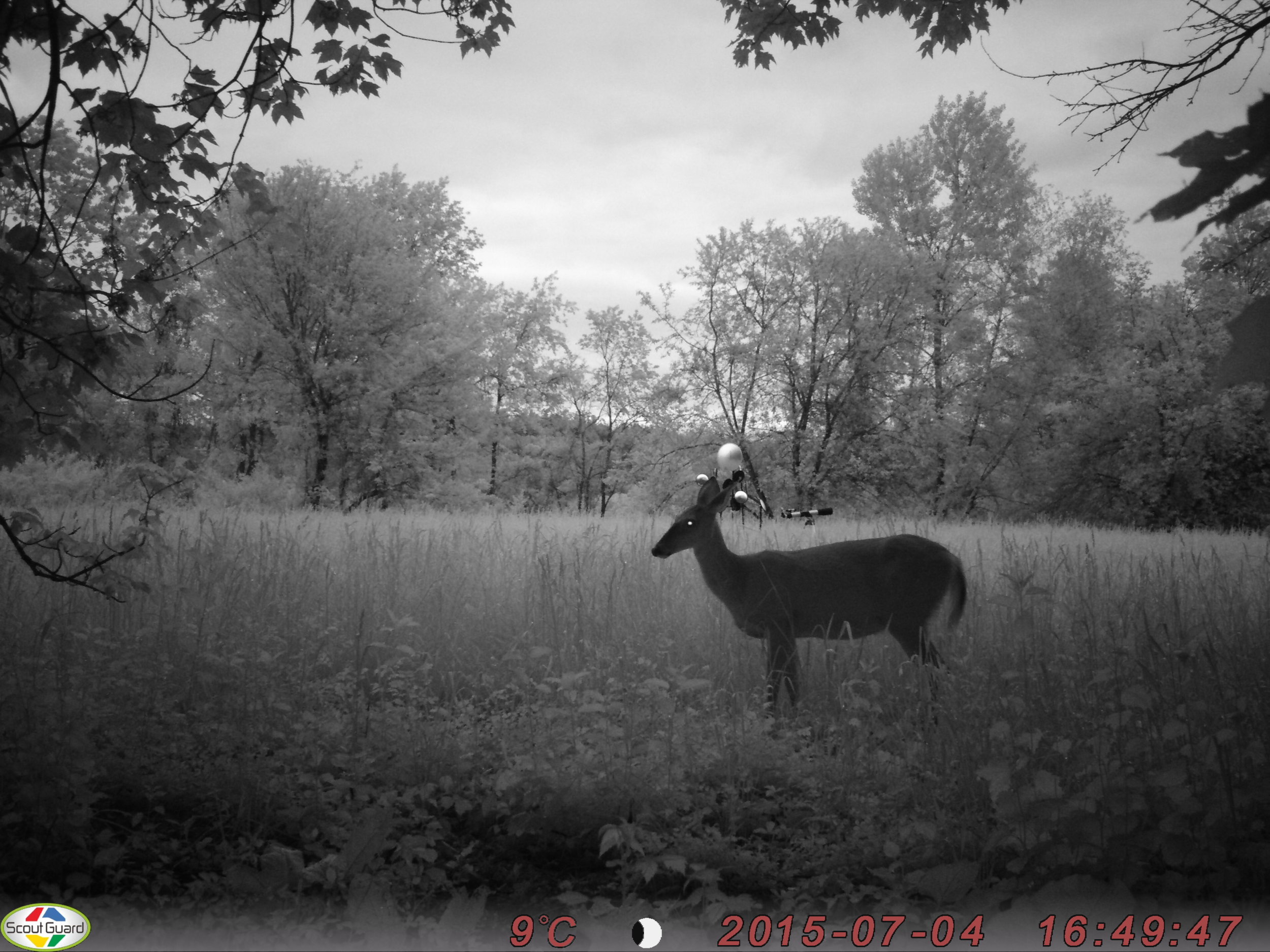If I Can't See Them
In early 2017 I was given the opportunity to contextualize my surveillance work as a commission for McLeish Field Station at Smith College, a 20 acre forested ecological preserve used by both the college and local community. The college's drone program implemented by Smith's Spatial Analysis Lab has met resistance from community members, voicing their disapproval of being watched from above by the college's fleet of drones. Thinking about drones and other sky-based imaging technologies, such as satellites, within the rural, isolated, tree-lined fields of McLeish, I borrowed from the famous philosophical thought experiment, "If a tree falls in the woods, no one is there to hear, does it make a sound", to think about the relationship between these surveillance technologies and this community by creating an installation thats asks "If I can't see them, am I seen?". As part of the work, nature has been a fascinating collaborator, at time protecting and providing camouflage by growing up and around the installation, while at other times exposing and denying cover, making the relationship between viewer and the viewed even more blurred.
Am I seen: The Reciprocal Nature of Identity
The experience of creating "If I Can't Be Seen" lead to writing an essay "Am I Seen: The Reciprocal Nature of Identity", which was published in 2017 by Routledge as a chapter for the The Evolution of the Image: Political Action and the Digital Self . URMEDEMIREVERSOPTICON, seen below, is the natural outcome of this essay. To read a draft, please click here
URMEDEMIREVERSOPTICON
URMEDEMIREVERSOPTICON is the inverse of If I Can't See Them: brought inside the gallery from the outside world while also marrying the themes of my previous work URME Surveillance. Where as the latter installation outwardly refracts the image of the landscape from a central point, the mirrors in URMEDEMIREVERSOPTICON are arranged into a funnel, creating a reflected inner space that multiples the viewer’s reflection standing within it's center, with the added option of putting on the URME Surveillance Prosthetic. While these mirrors act as agents of surveillance, the sandbags that support the mirrors and prevent them from falling are embossed with word pairings and phrases that explore the enmeshed complexity of surveillance culture. This work is currently on view in the Paul Robeson Galleries at Rutgers University as part of the Mirror Mirror exhibition through December 2019
































